Znakomiks #15
May 21, 2016
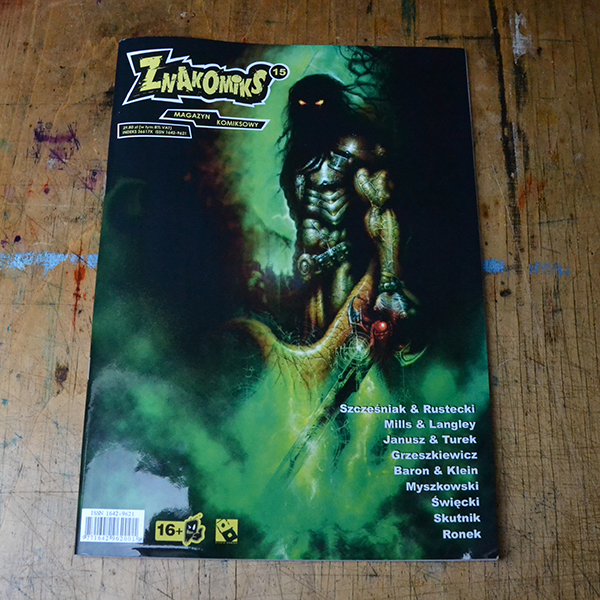
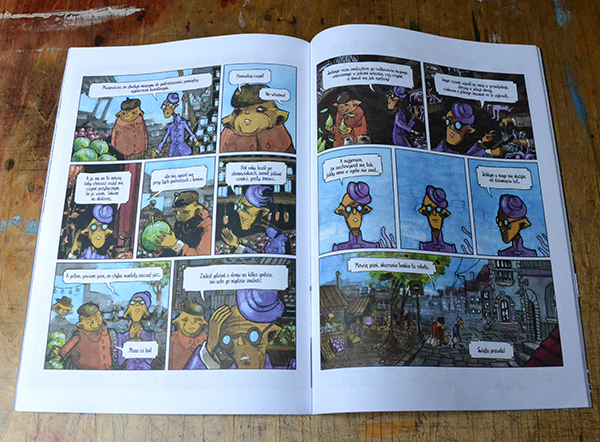
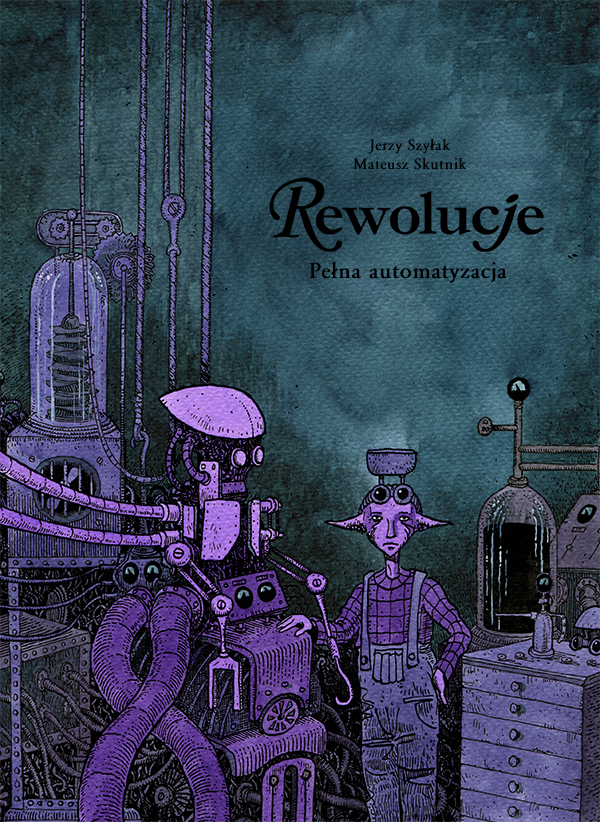
przykładowe plansze | sample pages
W świecie rewolucji technicznej nastała era robotyzacji. Powstają odważne plany automatyzacji wybranych gałęzi przemysłu. To koniec czasów znoju, trudu i ciężkiej pracy fizycznej człowieka. Przed nami nowy, lepszy świat w którym to automaty wykonują całą pracę, a ludzie mogą spokojnie zasiąść w fotelach i cieszyć się wolnością, swobodą i dostatkiem. Automatyzacja zapewni nie tylko wzrost wydajności fabryk, ale i nieosiągalny wcześniej przyrost dochodu narodowego. Zaiste, przed nami świetlana przyszłość. Nie ma się czego obawiać. Wszystko będzie dobrze.
Recenzje:
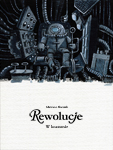 Komiksową serię Rewolucje Mateusza Skutnika należy uznać za godny hołd złożony erze silnika parowego, epokowym wynalazkom i wielkim wizjonerom. Mamy tu do czynienia z oryginalnymi opowieściami z pogranicza literatury steampunkowej oraz suspensu, z elementami grozy i kryminału. Twórca przewrotnego cyklu wykreował na jego łamach niepowtarzalne uniwersum, wypełnione wybitnymi jednostkami, a także ich nieszablonowymi dziełami. W ósmym tomie (W kosmosie) pozornie oderwane od siebie wątki mocno zazębiają się ze sobą, a jego osią fabularną jest podróż w stronę gwiazd.
Komiksową serię Rewolucje Mateusza Skutnika należy uznać za godny hołd złożony erze silnika parowego, epokowym wynalazkom i wielkim wizjonerom. Mamy tu do czynienia z oryginalnymi opowieściami z pogranicza literatury steampunkowej oraz suspensu, z elementami grozy i kryminału. Twórca przewrotnego cyklu wykreował na jego łamach niepowtarzalne uniwersum, wypełnione wybitnymi jednostkami, a także ich nieszablonowymi dziełami. W ósmym tomie (W kosmosie) pozornie oderwane od siebie wątki mocno zazębiają się ze sobą, a jego osią fabularną jest podróż w stronę gwiazd.
Mateusz Skutnik to jeden z najbardziej utalentowanych, konsekwentnych i precyzyjnych rodzimych artystów komiksowych. Oprócz recenzowanej serii ma na swoim koncie cztery części Blakiego, czyli filozoficzne i egzystencjalne rozważania poczciwego nieszczęśnika, upiorne komiksy z cyklu Morfołaki oraz nieco psychodeliczną Alicję ze scenariuszem Jerzego Szyłaka. Kolejne śmiałe projekty rozplanował z dużym wyprzedzeniem na następne lata.
Ludzie od zawsze marzyli o eksploracji kosmosu. W recenzowanym komiksie owo wiekopomne marzenie zostaje zrealizowane. Odważny astronauta wyrusza w przestrzeń kosmiczną. Niespodziewanie dociera do dziwacznej rzeczywistości, wypełnionej nieżywymi żabami. W niepojętym miejscu znajduje się również enigmatyczny przedmiot – duży fioletowy sześcian, pokryty dziwacznymi znakami. W międzyczasie poznajemy losy innych bohaterów komiksu, w tym ojców sukcesu owego projektu, wnikliwego naukowca oraz rozbitków z zatopionego statku.
Opowieść wypełniona jest całą masą szarlatańskich wynalazków, dziwnych urządzeń i mitycznych przedmiotów (wspomniana kostka). Najmocniejszym punktem niniejszego dzieła są zaskakujące zwroty akcji, soczyste dialogi oraz wszechobecna aura niepokoju, lęku przed niepojętym. Skutnik i Holcman udanie zaprezentowali destrukcyjny układ człowiek – maszyna. Jak w przypadku wcześniejszych tomów serii, zaserwowano nam niebanalne zakończenie oraz wyrazistych bohaterów.
Z dobrej strony prezentują się charakterystyczne ilustracje rodzimego artysty. Skutnik z wielkim wyczuciem rysuje wielce wymowne plansze, pełne apetycznych niesamowitości i pociesznie wyglądających bohaterów. Doskonale wypadają całostronicowe, dopieszczone pod każdym względem kadry – wystarczy spojrzeć na rysunek ze strony pięćdziesiątej czy lądowanie kosmonauty w dziwacznym świecie. Świetne są również akwarelowe, ciepłe barwy oraz układ poszczególnych plansz.
W kosmosie to kolejny mocny album w dorobku artystycznych Mateusza Skutnika. Postmodernistyczna wirtuozeria. Pean ku chwale wynalazczości i szaleńczej pogoni za marzeniami. Brawo.
Ocena: 8/10
Mirosław Skrzydło
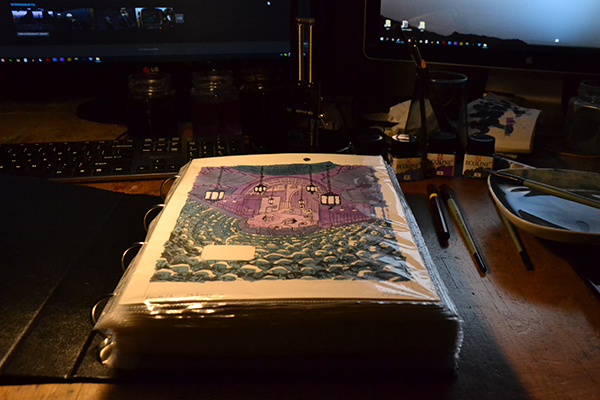
~~~~
[Mądrości na Koniec, odc. 1]
Nie wiem jak wam, ale mi zawsze najlepiej maluje się na koniec albumu. Podobno wykształcenie nawyku wymaga 60 dni codziennego powtarzania i wbijania do łba jednej konkretnej czynności. Więc jak się tak maluje dwa miesiące bez przerwy to na koniec flow jest nie z tej ziemi. A tu trzeba kończyć. Jutro ostatnia strona. Bez sensu.
~~~~
[Mądrości na Koniec, odc. 2]
Od 22 lutego do 10 kwietnia. 49 dni. Oprócz 54 stron nowego komiksu ten okres obejmuje także kolejne sto godzin grania w Fallouta 4. Kurwa – jak to, zapytasz bez pardonu? Tak to, bo w grę tu wchodzi prosty system perpetuum mobile. Otóż: najpierw trochę grasz, nie za dużo, godzinkę, może dwie, wystarczająco żeby wpędzić się w stan poczucia winy że nie malujesz. Następnie malujesz całą stronę, po czym w ramach nagrody za namalowanie całej strony odpalasz sobie grę. I tak w kółko. Do skutku.
~~~~
[Mądrości na Koniec, odc. 3]
Porada regresywna: jeżeli malujesz komiksy farbami wodnymi i jednocześnie masz kota lub dwa – wodę do malowania trzymaj w słoikach, by po skończonej robocie móc zamknąć słoik nakrętką, bo inaczej koty w nocy chleją tę wodę jednocześnie rozchlapując dookoła, nie daj boże na monitor od kompa a już totalnie nie daj boże na planszę którą jak baran zostawiłeś obok na noc. Polecam heksagonalne słoiki firmy Rolnik.
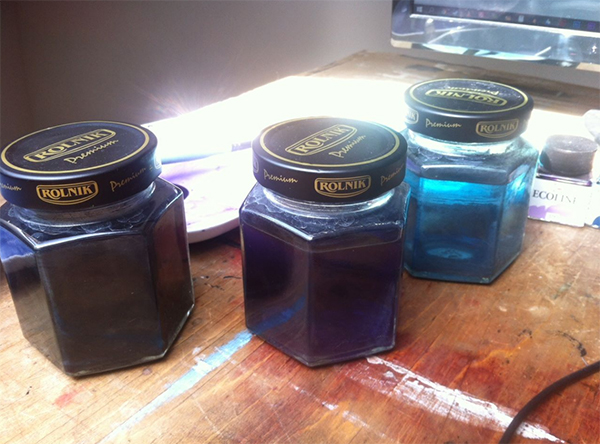
~~~~
[Mądrości na Koniec, odc. 4]
Porada wsobna: jak chcesz skończyć album w weekend, to nie zostawiaj sobie na niedzielne popołudnie ostatniej planszy, która sama w sobie powinna zabrać około tygodnia benedyktyńskiej pracy. Sigh. Skończę prawdopodobnie jutro. Czyli wychodzi 22 luty – 11 kwietnia. 50 dni. 54/50. I tak niezły wynik.
~~~~
[Mądrości na Koniec, odc. 5]
Tak patrzę na ten cały album i mogę spokojnie potwierdzić, że owszem, definitywnie nadal nie umiem ani za dobrze rysować ani malować. Ale to nie szkodzi. Następnym razem znowu postaram się jeszcze bardziej po prostu.
~~~~
[Mądrości na Koniec, odc. 6]
Ewidentnie, ale to ewidentnie przejawiam objawy uzależnienia od malowania tego albumu. Ta ostatnia strona przedłużała jak mogła, byle się jeszcze nie skończyć. Ale trzeba umieć powiedzieć sobie w pewnym momencie – wystarczy. I tak oto, koniec.
~~~~
[Mądrości na Koniec, odc. 7]
Okładka – zawsze najgorsza robota.
Also – przepraszam za spamowanie facebooka, ale tak jakoś na koniec albumu zawsze nostalgicznie mi się robi. Za kilka dni przejdzie, wszystko wróci do normy.